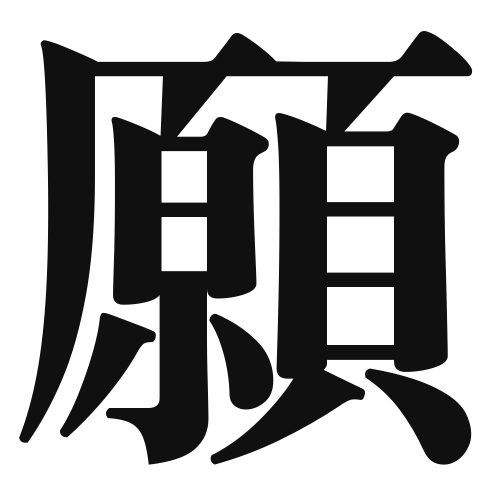1. Overview of Meaning
The kanji “願” (gan) means “wish” or “desire.” It expresses a strong hope or request for something to happen, often used in contexts related to prayers or aspirations.
2. Formation and Radical
Formation of the Kanji: The kanji “願” is a compound character, which combines elements of both phonetic and semantic components. It is classified as a 形声文字 (keisei moji), meaning it consists of a meaning component and a sound component. The left part, “言” (gen), relates to speech, while the right part, “願” (gan), indicates the concept of wishing or desiring.
Radical: The radical of “願” is “言” (gen), which is associated with words and speech, highlighting the importance of communication in expressing wishes.
3. Examples of Usage
Common Words and Phrases: Some frequently used words that include “願” are:
- 願い (ねがい, negai) – wish
- 願望 (がんぼう, ganbō) – desire, aspiration
- 願書 (がんしょ, gansho) – application form
Example Sentences in Daily Conversation:
- 私の願いは、世界が平和になることです。
(My wish is for the world to become peaceful.) - 彼女は大学に合格することを願っています。
(She wishes to pass the entrance exam for university.)
4. Synonyms and Antonyms
Similar Kanji: A similar kanji is “望” (ぼう, bō), which also means “wish” or “hope,” but it often conveys a sense of longing or aspiration rather than a direct request.
Opposite Kanji: An antonym is “拒” (きょ, kyo), which means “refuse” or “reject,” indicating the opposite of wishing for something.
5. Cultural and Historical Background
Relation to Japanese Culture: The concept of “願” is deeply rooted in Japanese culture, often associated with Shinto practices where people write their wishes on wooden plaques called “絵馬” (ema) and hang them at shrines.
Proverbs and Idioms: One common saying is “願い事は口に出すと叶う” (Negai goto wa kuchi ni dasu to kanau), which translates to “Wishes come true when spoken,” emphasizing the belief in the power of expressing one’s desires.
